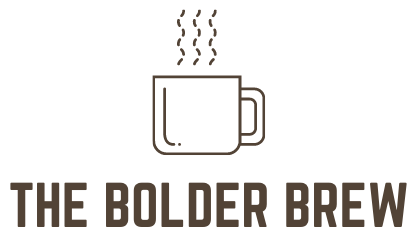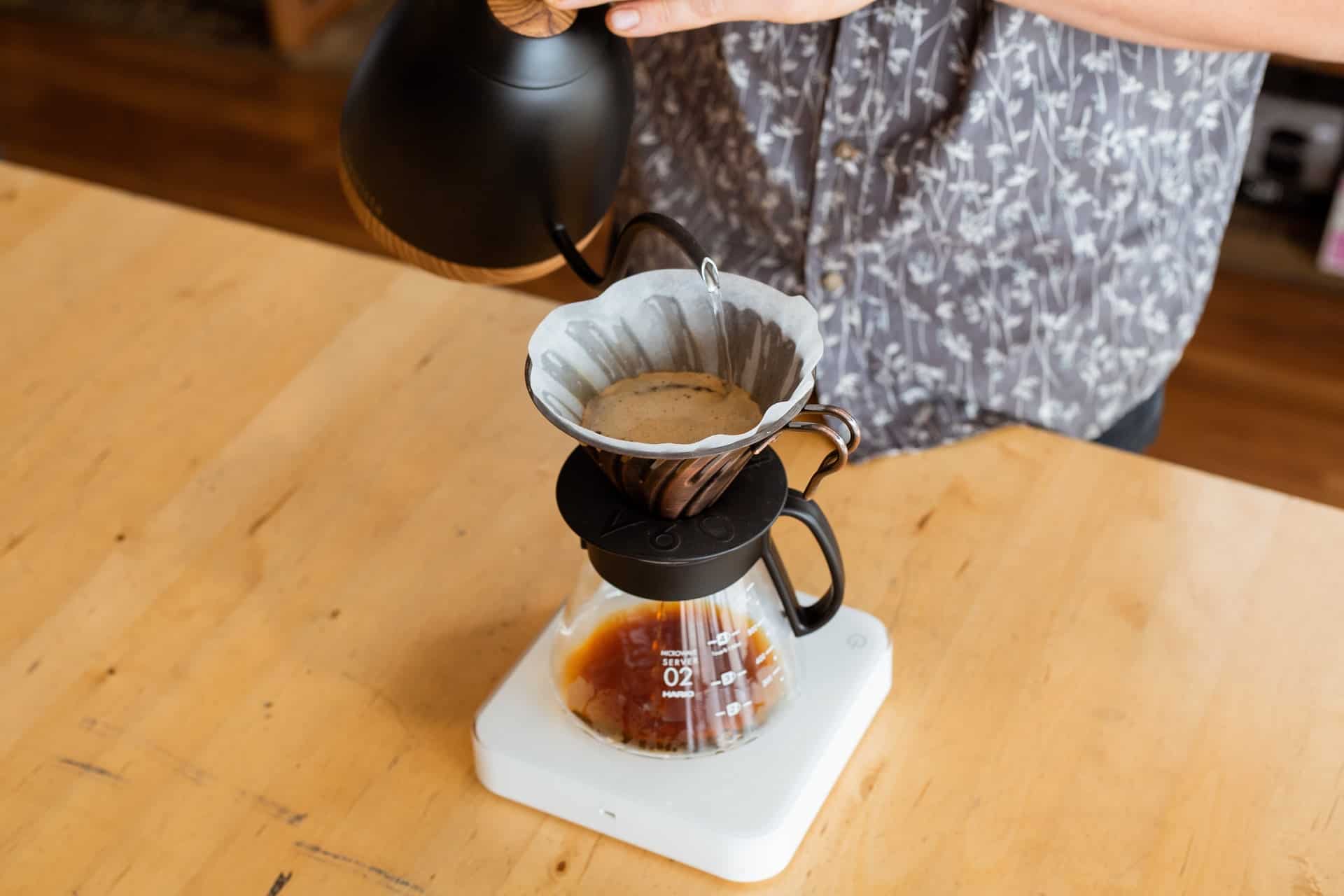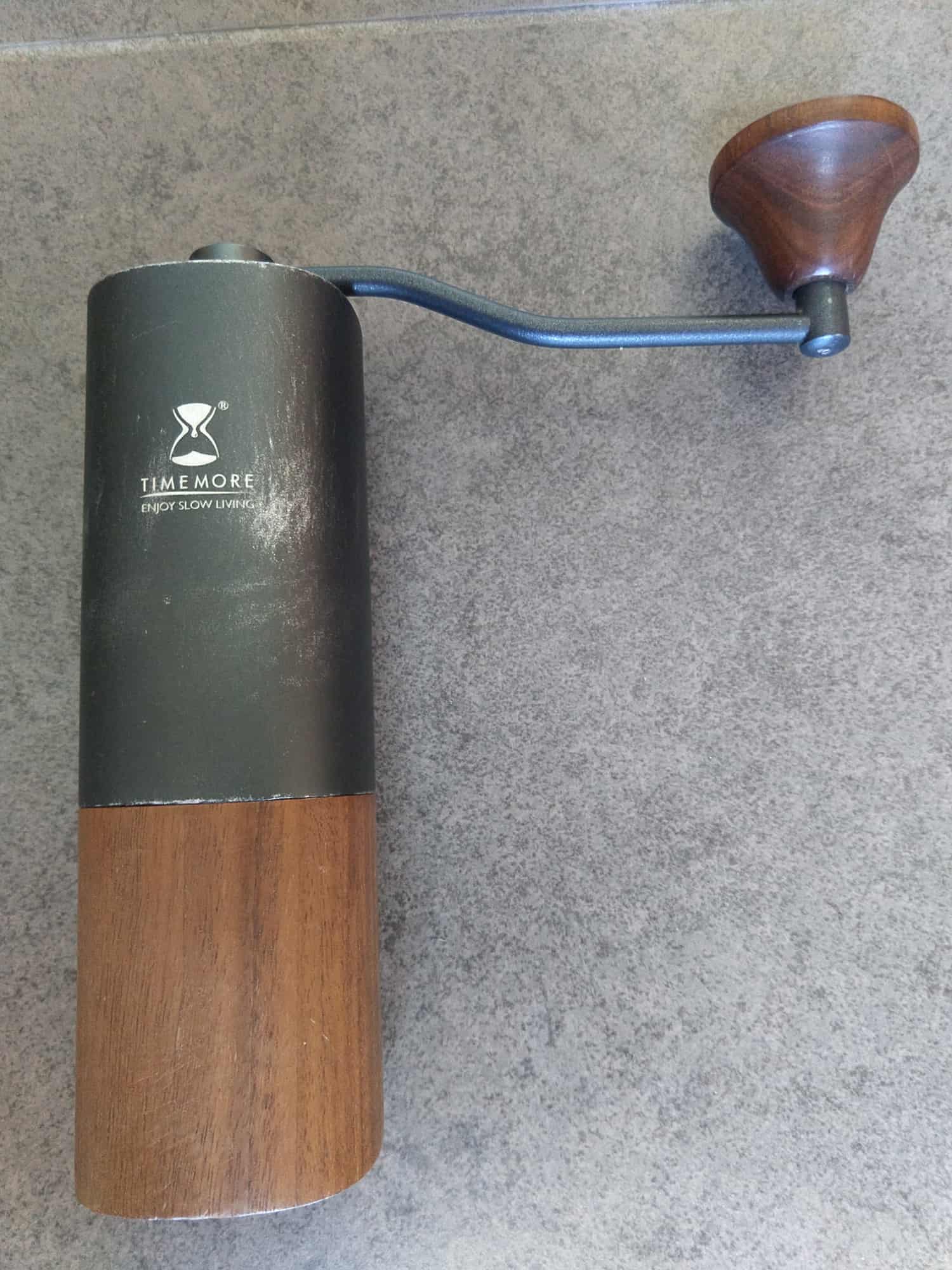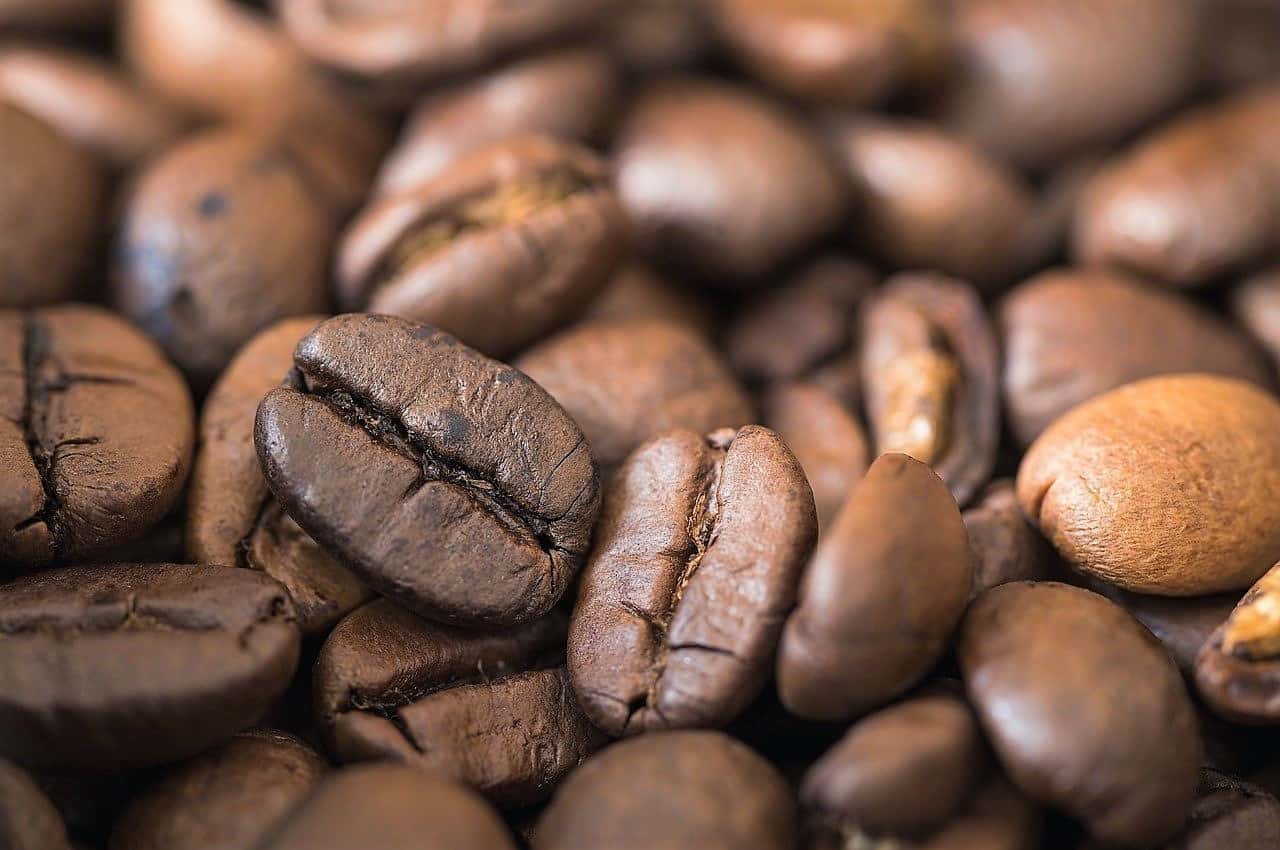Is Your Grinder Ruining Your AeroPress Brews? (Not If You Use One Of These)
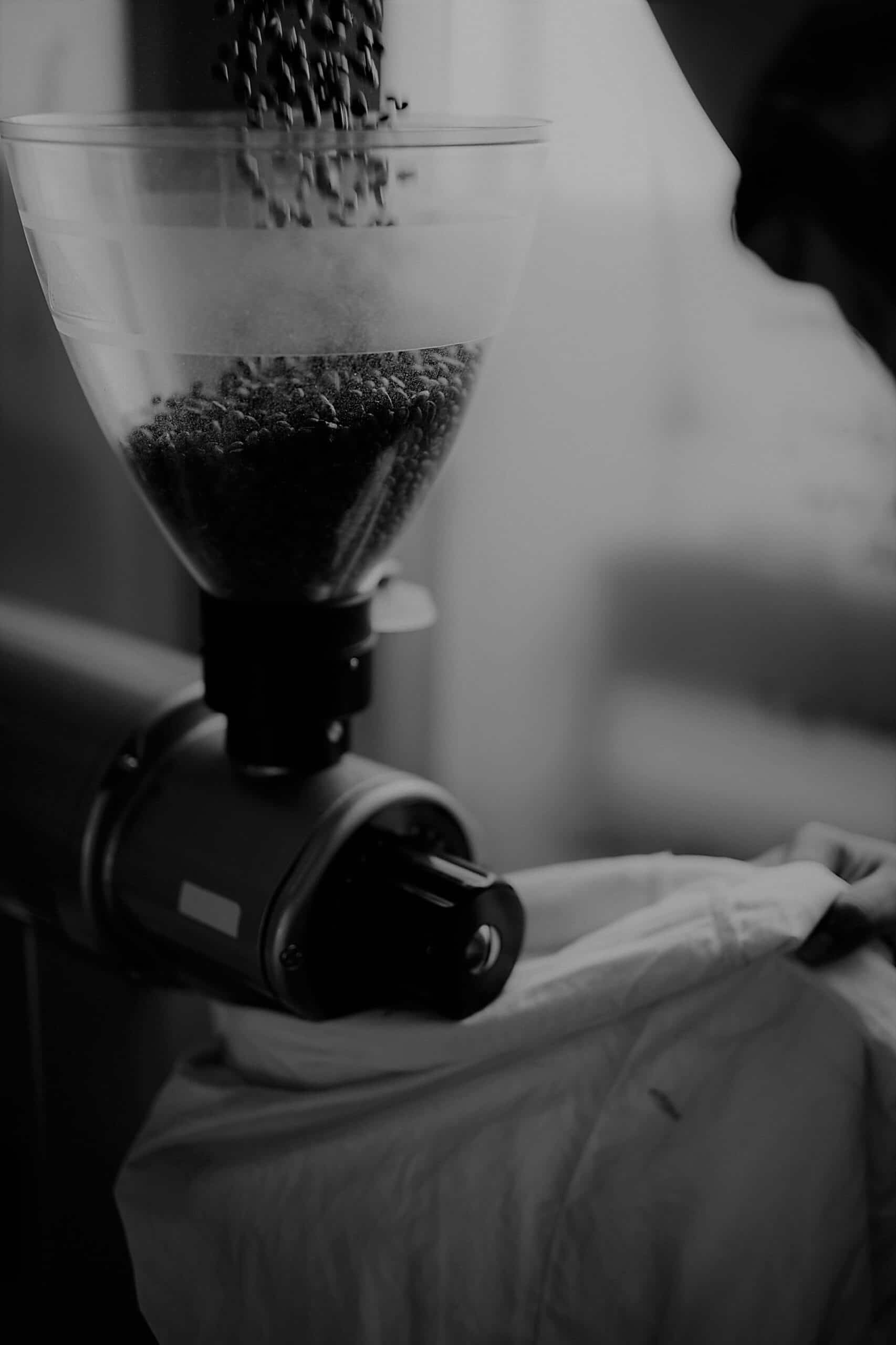
When you make pour-over coffee, you're at the mercy of gravity.
If grind size is a little off, then you'll probably get a wasted cup of over- or under-extracted coffee. There's just not much you can do about it.
With the AeroPress, that's not the case. It's not just convenient, but an incredibly forgiving design.
Its plunger gives you total control over how long the coffee brews. Press it earlier to end the brew, later to extend it.
Simple enough. The coffee will extract for exactly as long as you choose, period.
But what it can't overcome is an inconsistent grind.
Let's look at what that matters and how to fix it. I'll also share my top two manual grinder picks for AeroPress users.
Table of Contents
I'm an affiliate.
I hope my product recommendations make your life a little better! As a member of programs including Amazon Associates, I earn from qualifying purchases. If you do choose to purchase though links here, then I greatly appreciate your support!
Why A Consistent Grind Matters
All else being equal, the size of a coffee particle determines how quickly it extracts and what the brew tastes like.
Powdery grounds, known as "fines," extract in no time and can get sharp and unpleasantly bitter.
Large pieces, known as "boulders," extract too slowly and will leave behind a watery, sour, or oddly salty taste.
So when you have lots of fines and boulders mixed in, there's not much you can do. No matter how early or late you press the coffee out of your AeroPress, part of it just isn't right.
The key is a good grinder.
"Good" sounds kind of vague and subjective, but it actually means something pretty specific.
Cheap grinders have two main flaws, and a good grinder is one that avoids them.
Bad burrs (or, gasp, blades)
True, blade grinders aren't quite the end of the world. But some baristas would say they in fact are.
The reason is that blades are physically incapable of creating an even grind. You'll get a wildly varied mix of fines, boulders, and literally everything in between. This means no cup is ideal, and no two cups are the same.
You're better off--and this is no exaggeration--with a mortar and pestle than with most blade grinders!
Suffice to say that burr grinders are preferred. They sort of crush and slice at the same time, which theoretically makes for more even results. They're also easy to adjust to specific settings, whereas blade grinders are simpler off or on.
But even then, all burrs aren't created equal.
Inexpensive ones tend to use ceramic, which cannot get nearly sharp enough to "cut" coffee consistently. They tend to pulverize it, which again leads to more fines and boulders than we'd like.
There's also a type of cheap steel design known as "false burrs." While they're technically steel, the metal is sintered (molded from a sort of powder) rather than precisely machine into shape. And like ceramic burrs, false/sintered steel ones just aren't sharp enough. They'd work for crushing wheat or pepper, I suppose, but not for coffee.
We want solid, machined, stainless steel burrs, plain and simple.
Shoddy shaft and bearing quality
The burrs are critical, but they're only as good as the grinder is solid.
Mechanically, there's rather a lot going on.
First, there are opposite twisting forces: the crank in one hand, and the grinder's body in the other.
Then, there's vibration and jarring as hard coffee beans break up between the burrs.
All of that could jostle the burrs around and cause the same old problem: inconsistent grounds. On cheaper grinders, that's exactly what happens.
The better solution is to use a sturdy shaft between the crank and burrs, run it through high-grade bearings at each end, then spring-load the burrs, and support the whole thing with metal or very beefy plastic struts inside.
If that sounds like a bunch of engineering mambo-jumbo, that's OK.
The upshot is simple: these things aren't easy or cheap to build well, and there are no two ways about it.
Fortunately, in recent years, there's been a low-key surge in the premium hand grinder market.
They come in various shapes and sizes, but for most AeroPress users, two models stand out in particular.
For Better Flavor, Try These AeroPress-Friendly Grinders
You used to have to spend hundreds on high-end electric grinders to get consistent results.
Today, similar (even better) burrs and construction quality are available in manual grinders for not much more than $100 or so. You can spend more, but unless you're grinding more than an ounce or two at a time, you don't need to.
And if that sounds expensive, remember that it's only 2-3x the price of a shoddy grinder. And just think of all the coffee you're no longer wasting!
Knock Aergrind
Knock may have made the ultimate AeroPress grinder.
Inside, the Aergrind is much like the other grinders below.
But it was (to my knowledge) the very first designed to fit inside an AeroPress. That's a great bonus for anyone who travels a lot and tries to pack light.
It has clear grind setting marks (something my other pick is missing) and has a particularly clever way of holding its crank to the AeroPress's chamber.
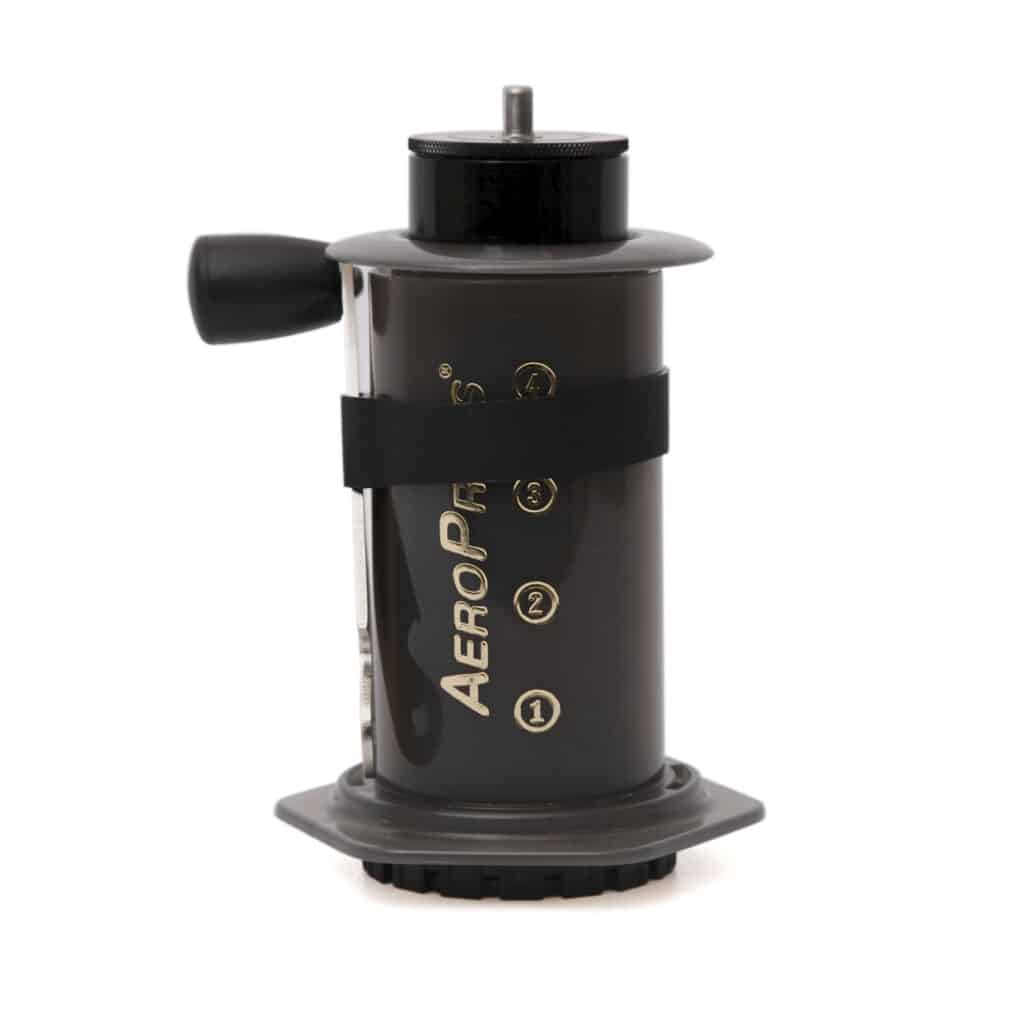
Where to find it: Check with Prima Coffee for stock in North America. Availability is hit-or-miss, so you may need to be patient.
Timemore Slim
The Timemore Slim is easier to find (as of writing) and equally convenient.
Timemore has been available from China for a few years, but only recently became available in the US.
Their Slim model also fits inside the AeroPress, just without the clever rubber crank holder-plus-grip. (You could probably replicate it with the right rubber band.)
However, its knurled metal finish is easier for some folks to hold, and by most accounts it grinds faster than the Knock yet every bit as consistently.
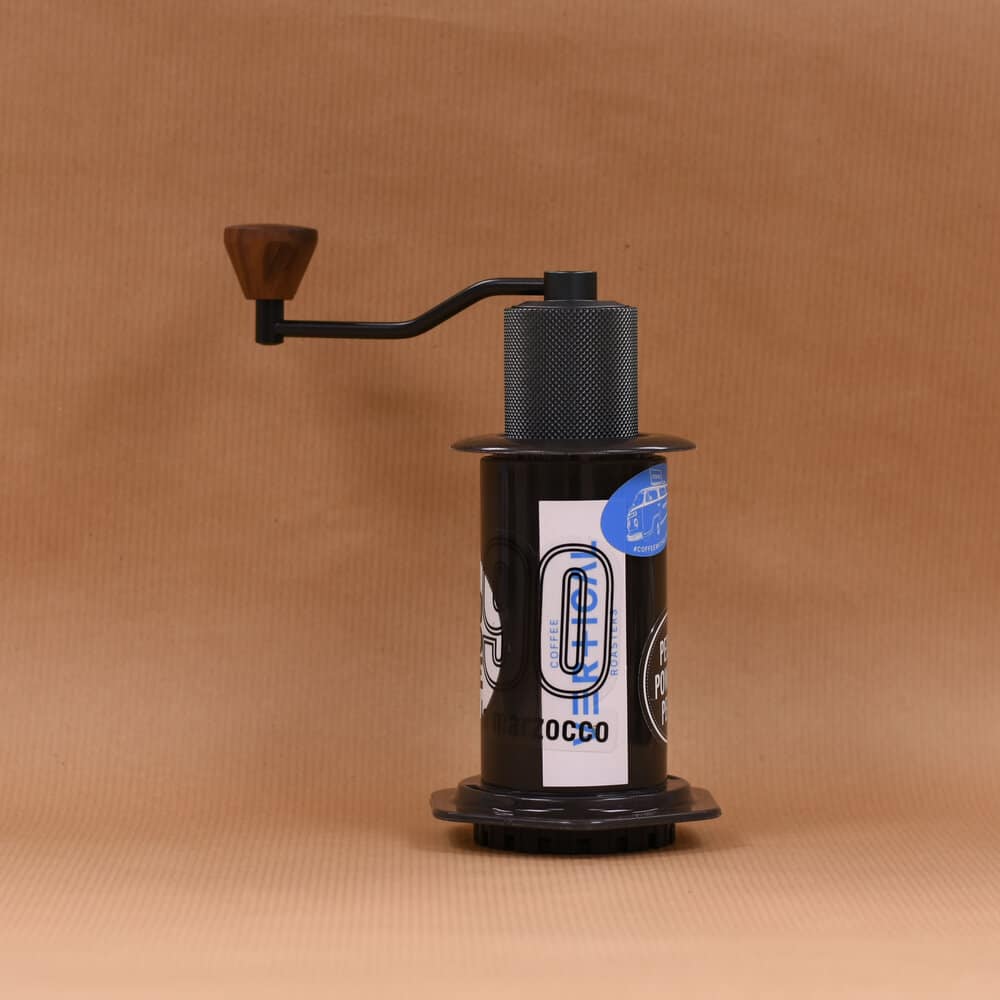
Where to find it: Usually available online here, along with the smaller Nano and slightly larger Chestnut G1 and C2. I own the Chestnut G1 (which is internally almost identical) and have reviewed it in detail here, so check that out for more information.
1Zpresso Q2
Finally, a newer challenger to the "budget-premium" grinder title is 1Zpresso. (Nope, no idea what's up with their name.)
Their smallest grinder, the Q2, also pulls off the AeroPress plunger trick for travel.
But it does so for the lowest price of the three, as of writing, and should theoretically offer similar grinding speed and results.
It's a newer model with less information available, but the consensus is strongly positive so far.
if I were in the market, I wouldn't hesitate to buy one today.

Where to find it: Available online here.
The AeroPress is brilliant, but unequivocally better with the right grinder.
You're fortunately to be reading this now, since it's only recently that so many great hand grinders are even available, let alone affordable.
My suggestion: As I mentioned, the Timemore Slim is functionally the same as the grinder I use every day (reviewed here). I recommend it highly, although AeroPress users can't go wrong with any of these three.
